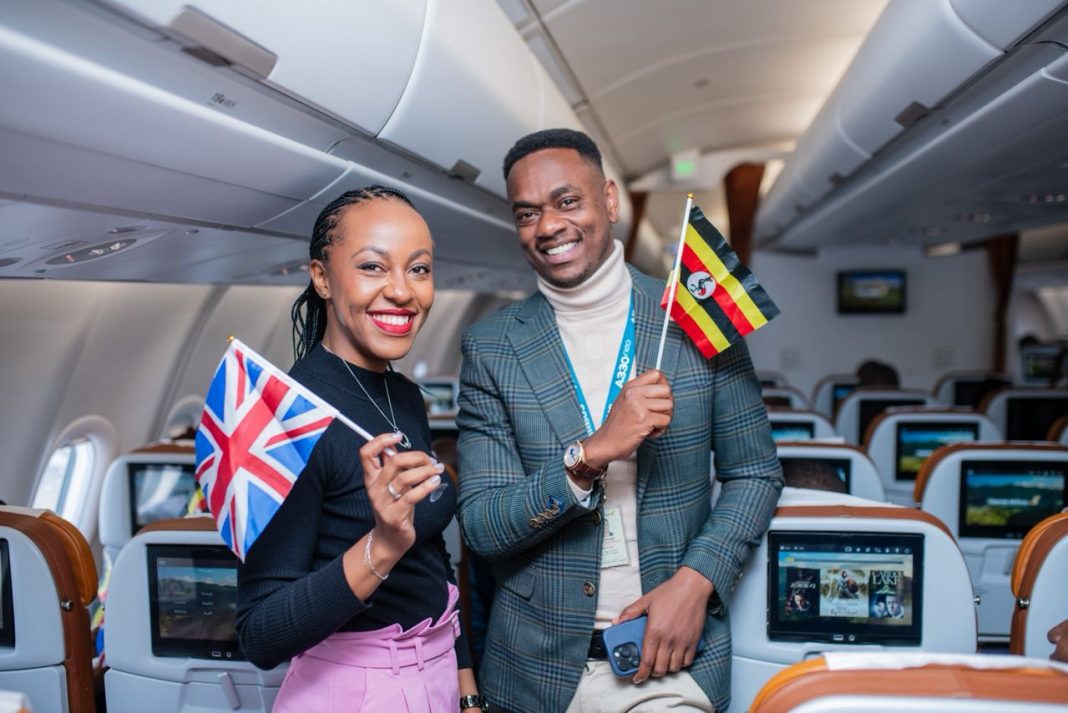By Samuel Ssenono
At exactly 10:05 a.m. EAT, on Sunday 18 May 2025, Uganda Airlines’ Airbus A330-800neo pushed back at Entebbe International Airport, marking the start of a new chapter for the national carrier. Flight UR110 departed with a relatively full cabin of passengers on board, inaugurating the airline’s direct service between Entebbe and London Gatwick. This milestone comes after months of careful planning and regulatory approvals, making Uganda Airlines only the second East African airline to secure slots at one of the UK’s busiest airports. Samuel Ssenono was on the inaugural flight and captured key moments of this historic journey.
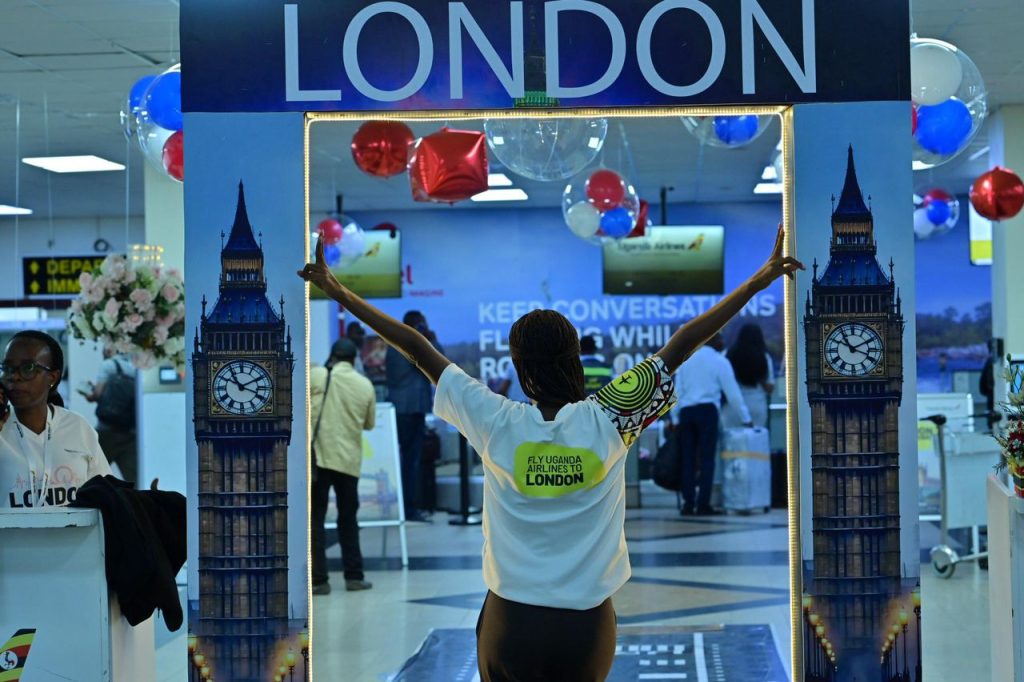
Flight Planning and Security
Booking for the maiden flight was finalized mere hours before departure, a deliberate strategy to manage logistics for the high-profile passenger list. By 4:00 a.m., passengers and media were already clearing security and immigration.
All London-bound passengers on this flight were taken through a newly introduced security screening at Entebbe International Airport, now located at the boarding gate. The procedure, which includes explosives trace detection, is a mandatory requirement for direct flights into the UK and U.S. Security officers used adhesive swabs on shoes, clothing, and hand luggage to check for explosive residues.
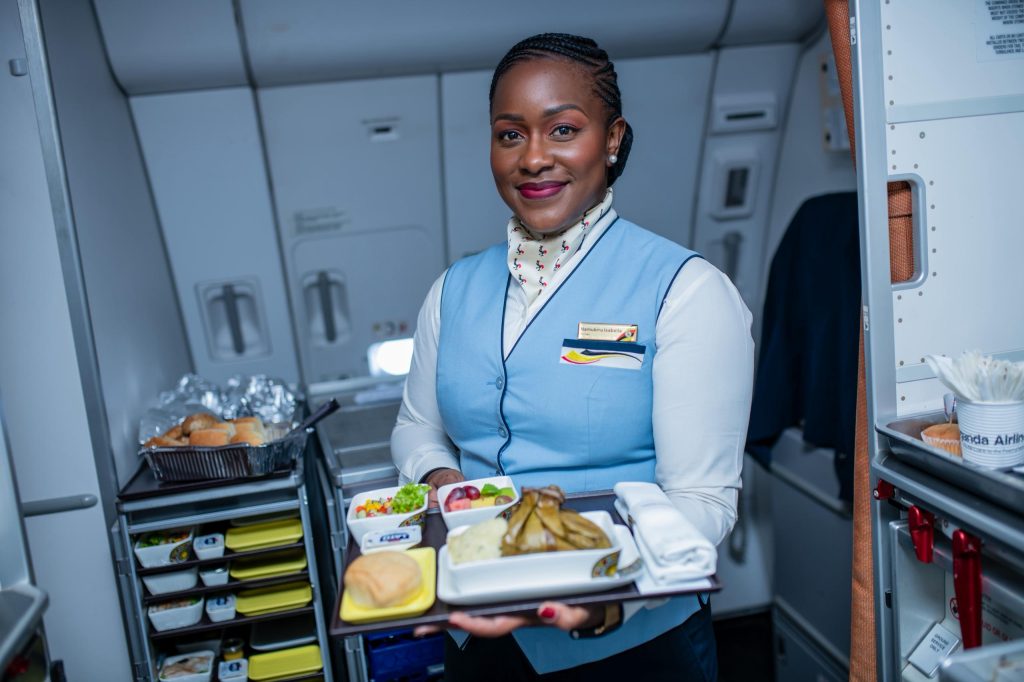
Captain Sam Masaba led the flight crew, supported by First Officer Martin Drichi and Captain Clive Okoth, with Kanyunyuzi Liz serving as chief purser. Masaba’s cockpit announcement set expectations for an 8 hour and 30 minute flight time an hour shorter than previously communicated block time.
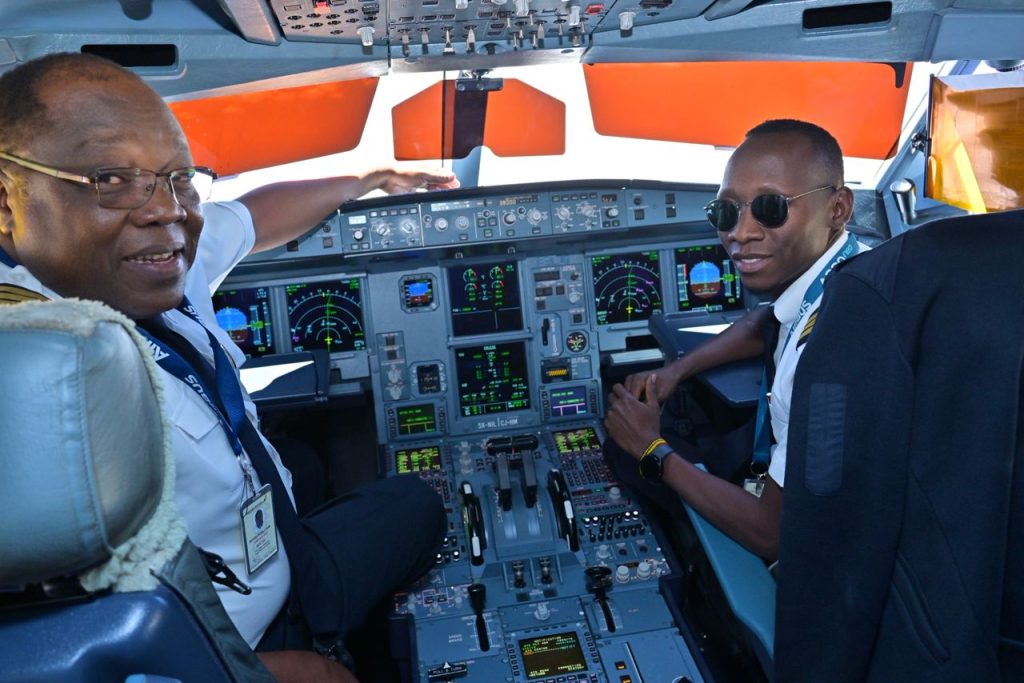
Onboard Service
Once airborne, the cabin crew commenced the first of three in-flight service rounds. Uganda Airlines had revamped its onboard menu for the London route, featuring top-tier selections such as smoked beef luwombo, a traditional Ugandan delicacy, alongside international dishes like Chicken Amritsari Masala and Mango Delice Cake. However, the in-flight entertainment system revealed areas for improvement; some passengers requested a broader movie selection and the inclusion of Ugandan music. The lack of Wi-Fi also stood out, especially for travelers accustomed to connectivity on the airline’s Dubai route.
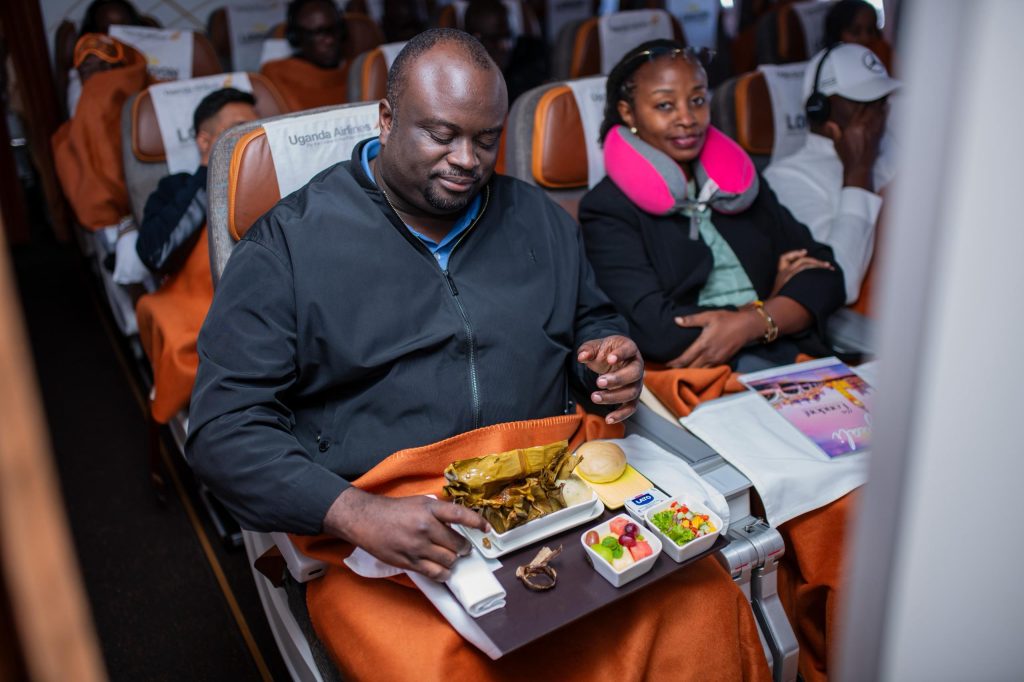
Arrival at Gatwick
Upon landing at Gatwick’s South Terminal, expectations for a traditional water cannon salute were unmet, as the airport has ceased such ceremonies citing environmental concerns. This aligned Uganda Airlines with other African carriers, including Nigeria’s Air Peace, who also arrived without the customary arch. Despite this, the arrival was emotionally charged. A sizeable Ugandan diaspora greeted the flight with flags and the national anthem. One crew member described it as “the most heartfelt reception we’ve ever seen on a launch.”
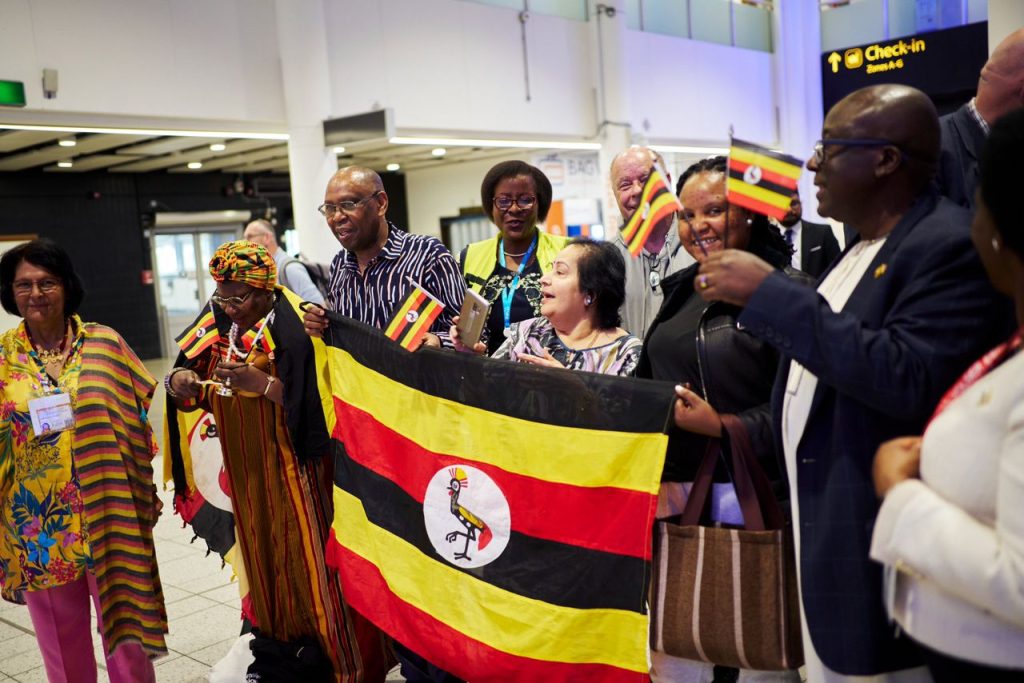
Departing Passengers
As ground handlers prepared the aircraft for turnaround, outbound passengers gathered to board the return flight to Entebbe, a moment decades in the making for many. “I’m very excited. This is history in the making,” said a middle-aged man recalling his last Uganda Airlines flight to the UK in 1988. Another passenger introduced his wife, Monique, and shared their long-awaited return journey.
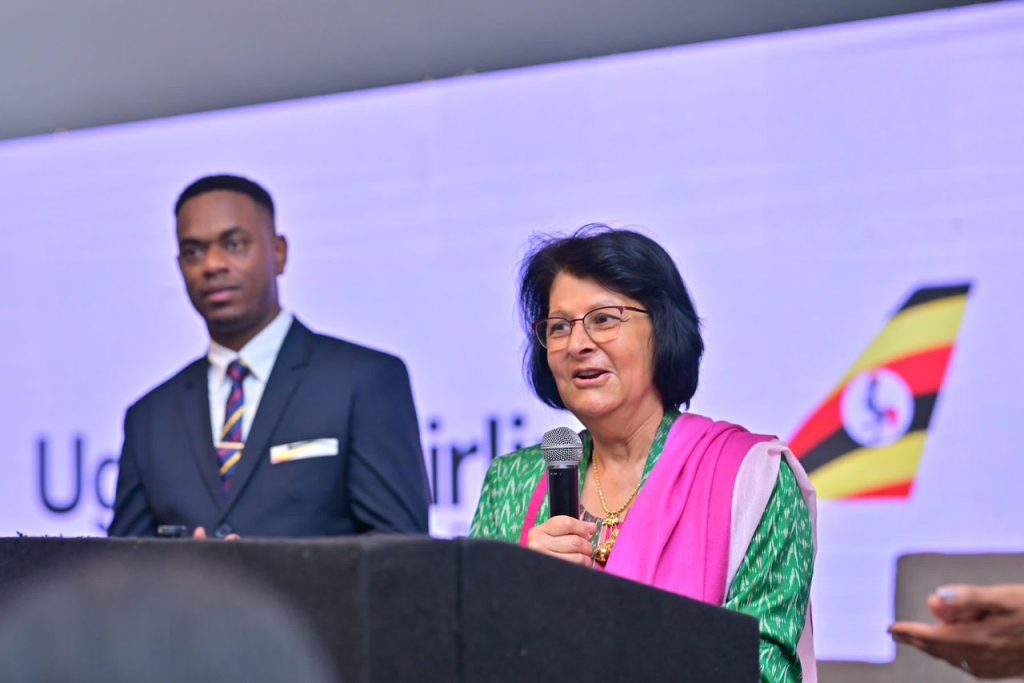
Uganda’s High Commissioner to the UK, Nimisha Jayant Madhvani, was on hand to bid farewell, personally thanking the crew and engaging with travelers. She noted the presence of Indian Ugandans on the return flight, many of whom had last been seen in Uganda in 1972 following Idi Amin’s expulsion of Asians.

Welcome Reception at Gatwick
Later, a warm reception at the Airport Hotel adjacent to Gatwick’s South Terminal brought together Uganda Airlines officials and dignitaries to address the media. Jonathan Pollard, Chief Commercial Officer of Gatwick Airport, welcomed the Ugandan delegation led by Gen. Edward Katumba Wamala, Minister of Works and Transport, and other senior officials.
Pollard praised the new route as “a valuable boost to trade and investment,” highlighting the economic potential it unlocks.
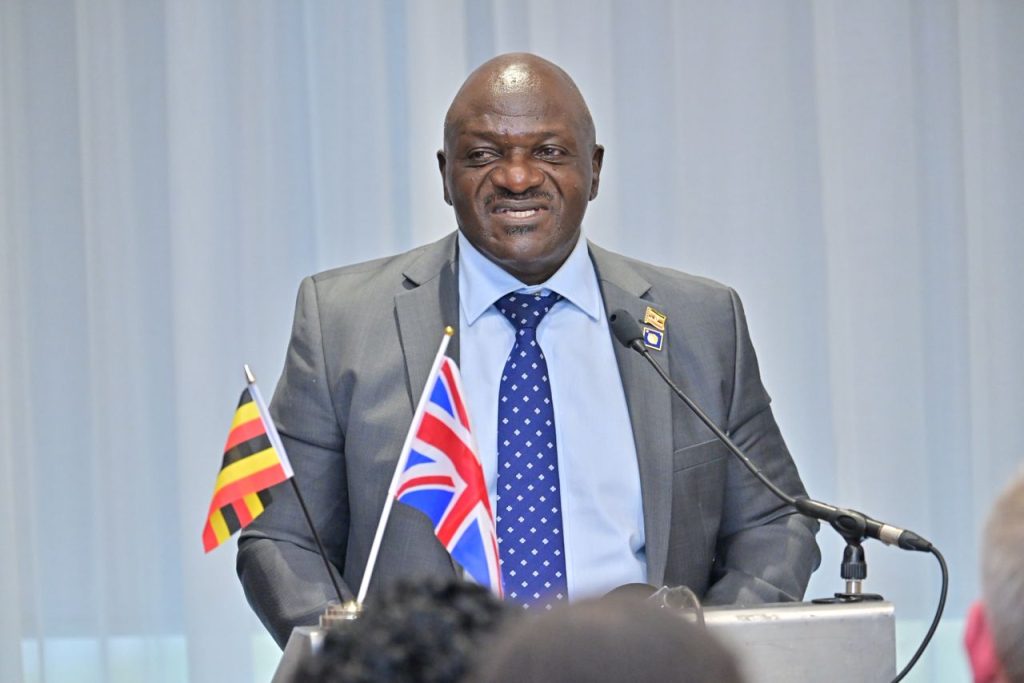
“The UK-Uganda market was worth over £600 million last year alone, with £500 million outbound from the UK. With more direct connectivity, this market will undoubtedly prosper even further,” he said.
High Commissioner Madhvani attributed the flight’s realization to years of perseverance, expressing gratitude to President Museveni for his vision and determination. She acknowledged contributions from key figures including former UK Trade Envoy Lord Popat, and noted the challenges faced in securing route clearances. “The crane has crossed the precipice and is now here,” she said, crediting recent political support from the UK government.
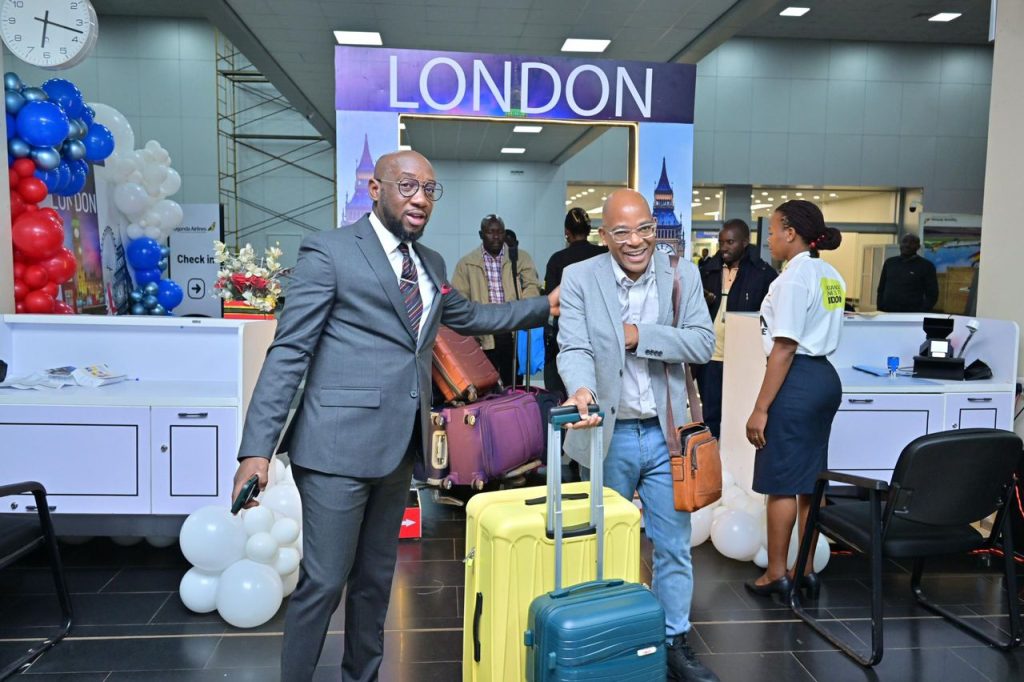
Business and Bilateral Momentum
Less than 24 hours after the flight’s arrival, Uganda’s diplomatic and commercial presence surged with the UK–Uganda Trade and Business Forum in London, attracting policymakers, investors, and trade partners.
Permanent Secretary and Secretary to the Treasury Ramathan Ggoobi hailed the direct flight as a “new chapter in economic and cultural relations,” underscoring its potential to dispel misconceptions that have hindered UK investment and tourism in Uganda.
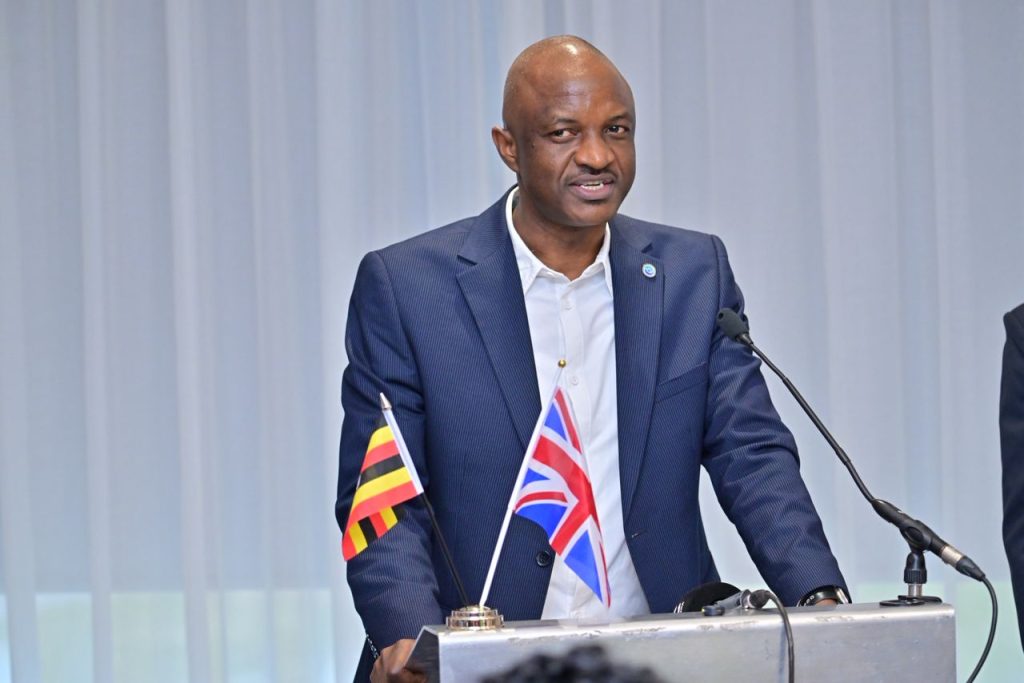
Works and Transport Minister Gen. Edward Katumba Wamala framed the route’s launch within a broader infrastructure strategy aimed at positioning Uganda as a regional logistics hub. “Our infrastructure connects not just Uganda but the entire region Kenya, South Sudan, DRC, and Rwanda,” he said.
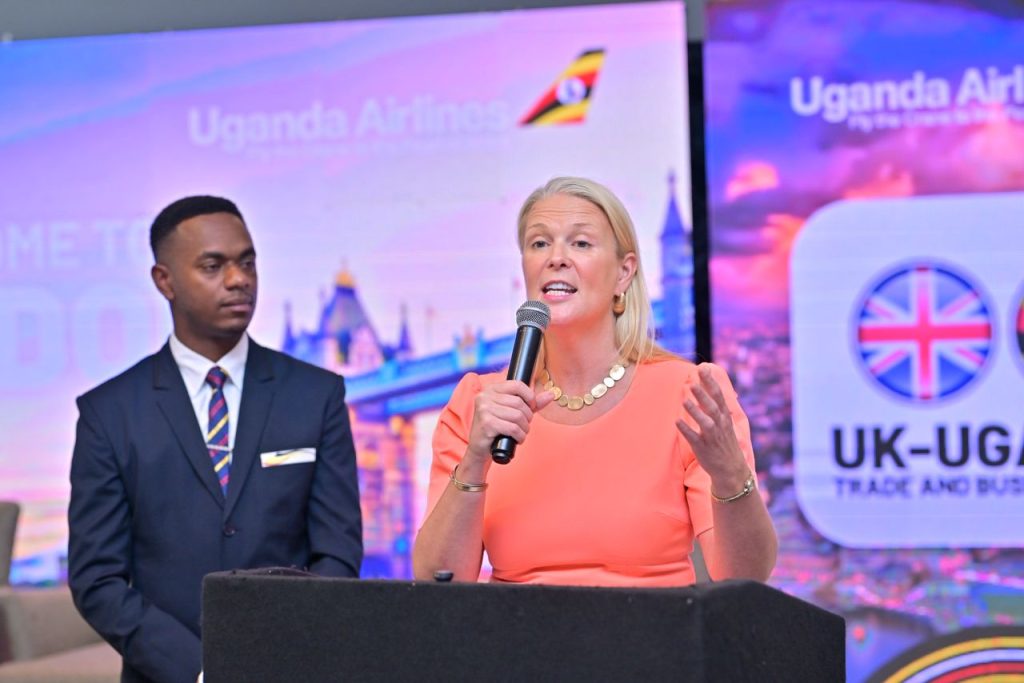
UK High Commissioner to Uganda Lisa Chesney emphasized Uganda’s strategic role within the East African Community and the African Continental Free Trade Area, granting investors access to a market of over 1.4 billion people. She highlighted ongoing British business engagement and the impact of UK Export Finance, which has supported over £560 million in export wins over five years.

Uganda Airlines Growth Strategy
London now marks Uganda Airlines’ 17th destination and its longest route to date, an intercontinental flight of nearly nine hours that signals a shift from start-up to growth phase for the airline. CEO Jenifer Bamuturaki emphasized that expansion is vital to competitiveness. “For an airline to thrive, it must grow. Shrinking is not an option,” she said. “Growth helps manage costs and avoids reliance on shareholders for survival.”
The airline has strategically aligned its London schedule to connect with Gatwick’s early morning departures to Europe and North America, while the inbound leg integrates with its 14-city African network for seamless onward travel across East, Central, and West Africa.
Bamuturaki stressed that expansion must be deliberate. “We analyze every route’s costs, fuel, maintenance, catering, crew hours. Long-haul routes only work if fed by strong regional networks, which is why regional growth around Entebbe is key.” She added that London provides a major intercontinental artery that will soon be supported by additional African spokes, enhancing passenger and cargo volumes.
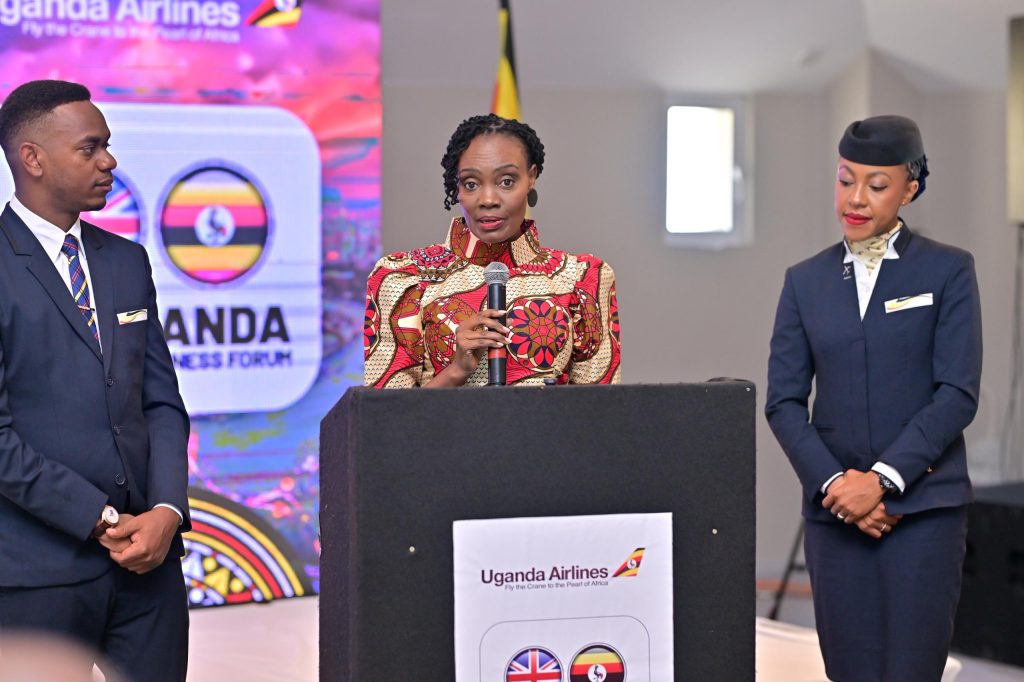
Sustainability Initiatives
The Gatwick flights are among East Africa’s first to incorporate a 2 percent blend of Sustainable Aviation Fuel (SAF), aligning with UK regulations. While modest, this marks a commitment to greener aviation.
“We recognize Uganda’s organic waste as a potential feedstock for jet fuel,” Bamuturaki explained. “SAF isn’t just a buzzword it’s the future, and we aim to lead this effort in Africa.”
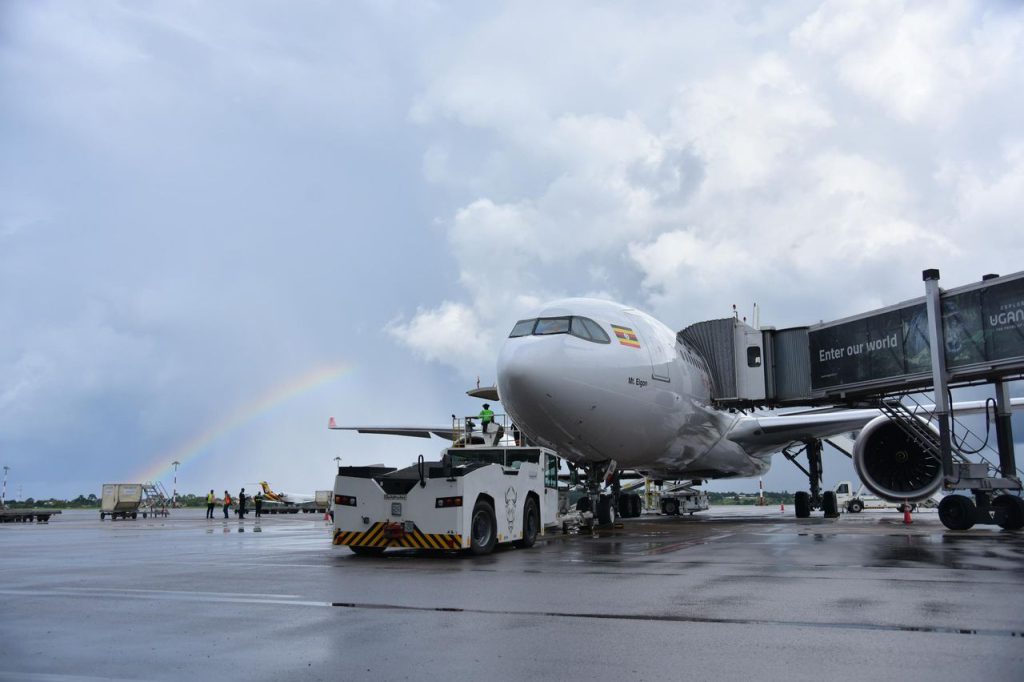
A Game-Changer for Uganda’s Tourism
Chris Mears, CEO of the African Travel and Tourism Association, said the nonstop London–Entebbe service will transform Uganda’s tourism sector. “Without airlift, there is no tourism,” he said. “This route makes it easier for visitors to access Uganda’s world-class safari and leisure destinations.”
The UK remains Uganda’s leading European source market, with over 15,000 British tourists visiting annually. In 2024, international arrivals nearly reached pre-pandemic levels, topping 1.4 million. The direct London link is expected to accelerate this growth by reducing travel time and improving convenience.


